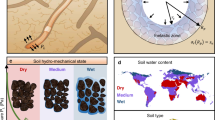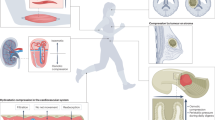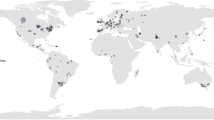Abstract
PREVIOUS work on these topics (Adolph and Adolph1, Adolph2, Maluf3, Wolf4, Maluf5, Wolf6) has assumed that the earthworm is a freshwater animal, and that volume changes are inversely proportional to changes in the concentration of the body fluids. Soil analyses (Russell7) show that the osmotic pressure of soil is higher than the above workers have assumed. Moreover, in the case of another annelid, Nereis diversicolor, Beadle8 has shown that the body volume can remain constant while the body fluid is diluted. Both assumptions may therefore prove unsound.
This is a preview of subscription content, access via your institution
Access options
Subscribe to this journal
Receive 51 print issues and online access
$199.00 per year
only $3.90 per issue
Buy this article
- Purchase on SpringerLink
- Instant access to full article PDF
Prices may be subject to local taxes which are calculated during checkout
Similar content being viewed by others
References
J. Exp. Zool., 43, 105 (1925).
J. Exp. Zool., 47, 31 (1927).
Zool. Jahrb., 59, 535 (1939).
Anat. Rec., 75 (suppl.), 139 (1939).
J. Cell. Comp. Physiol., 16, 175 (1940).
Physiol. Zool., 13, 294 (1940).
"Soil Conditions and Plant Growth" (7th edit., 1937); see p. 532.
J. Exp. Biol., 14, 56 (1937).
Biol. Rev., 18, 172 (1943).
Author information
Authors and Affiliations
Rights and permissions
About this article
Cite this article
STEPHENSON, W. Concentration Regulation and Volume Control in Lumbricus terrestris L.. Nature 155, 635 (1945). https://doi.org/10.1038/155635a0
Issue date:
DOI: https://doi.org/10.1038/155635a0
This article is cited by
-
Volume regulation in a euryhaline oligochaete,Pontodrilus bermudensis Beddard
Proceedings Animal Sciences (1978)



